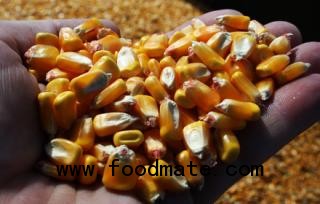
It's got a long way to go, though, says one expert. And there are a lot of legs to the demand stool, which will likely make it tough to slow demand enough to put a dent in the projected corn shortfall. Until then, corn prices likely won't stray too far from the current range.
"Corn consumption is clearly slowing, but the pace may not yet be sufficiently slow to ration the available supplies," says University of Illinois Extension ag economist Darrel Good. "This suggests that, while higher prices are not likely needed, current price levels will be maintained a while longer."
Ethanol production has declined more than 10% from where it was a year ago, and it's likely to stay around that level through the end of December, Schnitkey says. But, without some kind of policy shift, it's likely that level's not low enough to trim demand for the fuel.
"For the two weeks ended October 19, production was down 12% from that of last year. The year-over-year reductions are likely to continue to be large, at least through the end of the calendar year. Last year, ethanol production accelerated in November and December in anticipation of the expiration of the blender's tax credit on December 31, 2011," Good says.
"However, the current weekly pace is sufficient for corn consumption for ethanol and by-product consumption to reach 4.5 billion bushels for the year. The upcoming decision by the EPA in regard to a partial waiver of the Renewable Fuels Standards (RFS) is not expected to have a substantial impact on ethanol production in the near future."
Aside from the RFS, some farmers say there's still time, especially given current price levels, for that demand to slow by the end of December barring any event that would cause disproportionate shifts in fuel prices.
"This year's numbers as a percentage drop from last year aren't the complete story, though we are talking only a few percent difference in the end, at most," says Agriculture.com Marketing Talk adviser Palouser. "Ethanol is another story, but fuel is still expensive. Things like [Hurricane Sandy] may well put a slight dent in that, but a month or two will probably tell the story."
Then there's exports. They have definitely been slowing, Good says. Right now, we're exporting less corn each week than the amount USDA says is necessary to reach its estimate for the year. And, that discrepancy's likely to continue to grow.
"To date, the pace of corn exports has been much slower than needed to reach the USDA projection for the year. Based on the weekly Export Sales report, exports during the first seven weeks of the marketing year averaged 19.1 million bushels per week.
To reach the USDA projection, weekly exports for the remainder of the year need to average 22.6 million bushels," Good says. "As of October 18, 292 million bushels of corn had been sold for export, but not yet shipped. Those outstanding sales are 52% less than outstanding sales of a year earlier. Every major buyer has purchased substantially less U.S. corn than purchased last year. There may be some opportunity for exports to accelerate as the year progresses as competition from wheat and South American corn moderates."
But, will exports actually decline? Palouser doesn't think so. "I think exports of corn are likely to increase in the future, not decrease. My thinking is that the easy feed is being cleaned up now but some countries will ultimately have to turn to imports of feed -- and wheat," he says. "I think soybeans will be under heavy pressure, too, if South America can't demonstrate early on -- and that isn't too far away -- that they are on track for a huge harvest."
Ultimately, factoring in cuts in the livestock herd, the trim in demand adds up to essentially half of what it needs to be to match up with projected supplies, Good says. In the end, that means there's still a lot of demand destruction that needs to happen before supply and demand match up more closely.
"Based on the current forecast of the crop size, imports of 75 million bushels, and the assumption that year-ending stocks cannot be reduced below about 5% of consumption, corn consumption during the current marketing year will be limited to about 11.2 billion bushels. That is 1.326 billion bushels (10.6%) less than consumed in the previous marketing year.
The USDA has forecast a decline in consumption of 1.376 billion bushels and year-ending stocks slightly above 5% of consumption," Good says. "The ongoing pace of consumption reveals the adjustments that are being made to accommodate the available supply. A pace of consumption that cannot be supported implies the need for higher prices."
It all adds up to one big question for farmers like Palouser: "So, are you going to hold all your corn for that big surge to ration it?"





